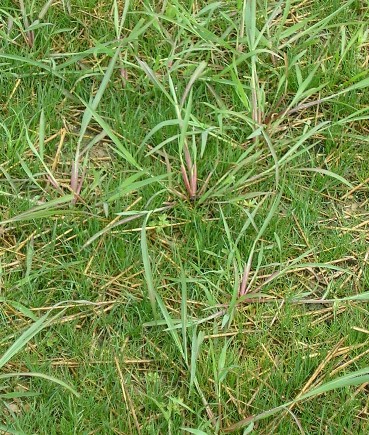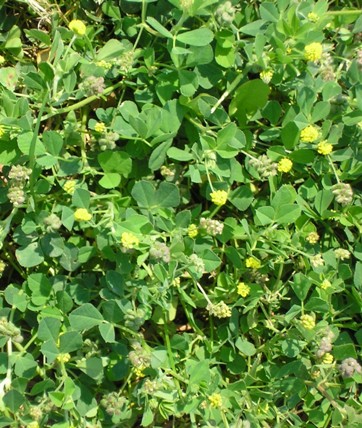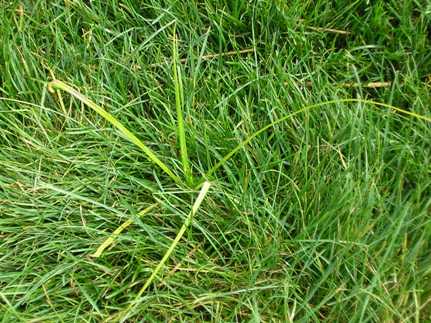IDENTIFYING WEEDS
Weeds compete with the lawn grasses for the much needed water, nutrients, and light. Control methods may differ with annual, biennial, and perennial weeds therefore it is important to know what type of weed you are fighting. While some weeds are easily recognized like the dandelion, others are only recognized because you didn't plant them. Knowing more about your weeds will help you control them.
WEEDS IN YOUR LAWN
BARNYARD GRASS

 Barnyard grass is a summer annual. Its matted growth pattern is created by low lying tillers that root when in contact with soil. Barnyard grass has a fibrous root system and reproduces by seed. Germination takes place in late spring and early summer. Barnyard grass is found in wet soils. It can be physically removed before developing a seedhead.
Barnyard grass is a summer annual. Its matted growth pattern is created by low lying tillers that root when in contact with soil. Barnyard grass has a fibrous root system and reproduces by seed. Germination takes place in late spring and early summer. Barnyard grass is found in wet soils. It can be physically removed before developing a seedhead.
BLACK MEDIC

 Black medic is a summer annual. It has a tap root and spreads low to the ground. The leaf can be mistaken for white clover because of the similar leaflets; however the center of three leaflets is located on a separate petiole. At maturity the cluster of bright yellow flowers will turn into a black seed pod. Black medic grows best in soil low in nitrogen.
Black medic is a summer annual. It has a tap root and spreads low to the ground. The leaf can be mistaken for white clover because of the similar leaflets; however the center of three leaflets is located on a separate petiole. At maturity the cluster of bright yellow flowers will turn into a black seed pod. Black medic grows best in soil low in nitrogen.
CLOVER

 White clover is a winter perennial. The above ground runners, stolons, accomplish the spreading of this weed. White clover has compound leaves. The nodes along the stem are a central point where the three leaflets are joined. White marks are sometimes present on the leaves as seen in the photo. The flowers are a combination of about 20-40 individual flowers. White clover flowers May through September and survives best in moist soil, low in nitrogen.
White clover is a winter perennial. The above ground runners, stolons, accomplish the spreading of this weed. White clover has compound leaves. The nodes along the stem are a central point where the three leaflets are joined. White marks are sometimes present on the leaves as seen in the photo. The flowers are a combination of about 20-40 individual flowers. White clover flowers May through September and survives best in moist soil, low in nitrogen.
DANDELION

 Dandelions are a winter perennial. The deep thick tap root makes pulling this weed difficult. Even the smallest piece of tap root left behind can result in several new dandelions. Leaves grow in a rosette with deep lobes pointing in toward the plant base. When breaking open a stem a white milky fluid can be seen. The yellow flowers will grow on their own individual stems. When the dandelion goes to seed the flower will become a white puff. The brown seeds with white hairs will easily travel in the wind. Reproduction is accomplished both by seed and the root.
Dandelions are a winter perennial. The deep thick tap root makes pulling this weed difficult. Even the smallest piece of tap root left behind can result in several new dandelions. Leaves grow in a rosette with deep lobes pointing in toward the plant base. When breaking open a stem a white milky fluid can be seen. The yellow flowers will grow on their own individual stems. When the dandelion goes to seed the flower will become a white puff. The brown seeds with white hairs will easily travel in the wind. Reproduction is accomplished both by seed and the root.
YELLOW NUDSEDGE

 Yellow nutsedge can be identified by its alternating waxy grass-like leaves with a prominent midrib and triangular stems. The young seedlings may easily be mistaken for grass. See photo to the left. Yellow nutsedge can also be identified by its reproductive behavior. Most of reproduction is accomplished by the rhizomes and tubers underground. The tubers or nutlets can be located at the end of whitish colored rhizomes. The tubers over-winter and can produce over 1,000 new plants and several thousand new tubers in one growing season. At maturity, a yellowish flower can be found on the triangular stem. Yellow nutsedge will do best in wet soil. e.g. ditches, low spots, areas with bad drainage.
Yellow nutsedge can be identified by its alternating waxy grass-like leaves with a prominent midrib and triangular stems. The young seedlings may easily be mistaken for grass. See photo to the left. Yellow nutsedge can also be identified by its reproductive behavior. Most of reproduction is accomplished by the rhizomes and tubers underground. The tubers or nutlets can be located at the end of whitish colored rhizomes. The tubers over-winter and can produce over 1,000 new plants and several thousand new tubers in one growing season. At maturity, a yellowish flower can be found on the triangular stem. Yellow nutsedge will do best in wet soil. e.g. ditches, low spots, areas with bad drainage.
